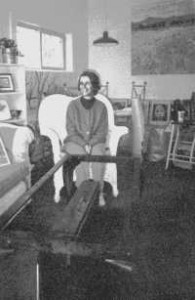Review by Kenneth Munsell
Geography – December 2000 – Colorado Central Magazine
The Metropolitan Frontier: Cities in the Modern American West
by Carl Abbott
Published in 1993 by the University of Arizona Press
ISBN 0-8165-1570-0
CARL ABBOTT’S thoughtful and interesting book, The Metropolitan Frontier, deals with the greatest modern contradiction found in the late 20th century American West — the huge metropolitan areas that are found widely spaced in an otherwise almost empty landscape.
There has been massive change in the American West in the half century following World War II. While most of the area still remains virtually empty of people and contains only a few small towns spaced at great distances, each of the Western states is dominated by relatively large and imposing cities.
Abbott’s book sets the tone when it informs us that about 80% of all of the people who live in the 19 states stretching from the Great Plains to the Pacific Ocean live in metropolitan areas. He argues that the major Western cities, such as Denver and Seattle, economically organize their vast surrounding hinterlands and then link them to the larger world economy.
Abbott also sees the same organizing function for the many important smaller and medium-sized cities of the West such as Missoula, Montana, even though he says cities of this small size would be virtually undistinguished and not considered important if found in the populous Eastern United States.
Abbott is especially interested in exploring the relationship between the recent expansion of extractive and energy-related industries and the recent growth of Western cities. Cities, such as Casper, the largest city in Wyoming, for example, only grew to metropolitan size because of extractive industry. For Casper, oil and gas caused the prosperity. For Spokane, Washington, it first came from the vast riches found in the silver mining districts of Northern Idaho.
The book’s beginning sections take an informative historical look at Western cities and then Abbott explains the unique patterns of growth found in many of those cities since the 1940s. In later chapters, he examines the tangled politics of growth. He then explains how the cities tie into the modern economy at three levels: the regional, national,and global.
Nowhere else in the country do cities dominate the small town hinterlands as in the West. Therefore, in order to understand the economics of the region’s small towns, one must also understand the role of the neighboring cities.
THE STRONG ECONOMIC AND SOCIAL PULL of a Spokane or a Denver can reach into the hinterland for hundreds of miles in every direction, causing small town residents to regularly travel to the central cities to go to special cultural and sporting events, or to shop, or even to buy necessities. That type of influence can either give life to surrounding small communities (when the city manages to distribute economic benefits to the small towns) or it can strangle and eventually kill them.
Western cities, according to Abbott, have also pioneered the American concept of the multicentered city (read, suburban-type sprawl) since they historically didn’t have the political restrictions that limited growth and usually had unlimited supplies of land surrounding them. Eastern cities normally could not easily expand because they were surrounded by other political entities. Cities in the West have also developed the political means necessary to annex great areas of land.
This concept of unlimited land is very relevant to the region’s small towns since it is in the West that we find the greatest numbers of the country’s most sprawling communities. Albert writes, “The corollary of the open city is the unbounded city. The typical Western city is capable of indefinite extension by adding easily reproducible units pulled from the box of urban Tinkertoys. The structure of the city, itself, presents no arguments against placing one more casino at the end of the strip or one more subdivision beyond the last.”
These cities also gobble up the small towns in their region and incorporate them into the sprawling metropolitan area.
The typical Western pattern of sprawl can and does consume vast open areas. Abbott gives three excellent examples of this. They include the Front Range communities lying at the edge of the Rocky Mountains north and south of Denver, the Seattle-Tacoma metropolitan area lying on Puget Sound and Texas’s Dallas-Fort Worth complex. The older small communities surrounding the original cities, themselves, have been surrounded, and new central places have been transformed in the faceless sea of development.
The book also looks at the interesting relationship between city and country and notes that the Western cities are often actually responsible for the success of small-town enterprises. To explain this irony, Abbott says, “In Island County, Washington, and dozens of equivalents around the West, dollars earned in cities have kept the stores open in the small towns, employed the country lawyers on land deals, turned schoolteachers into real estate agents, and made underemployed farmers and miners into instant construction contractors.”
Western cities, therefore, do far more than just drain life and vitality from small communities. The real relationship is far more complex and often has many positive elements.
People wanting to pick up an interesting and informative book that looks at the historical and present-day relationship between cities, suburbs and small towns in the Western United States will find this volume fascinating. It is well researched and supported, as well as being very readable.
–Kenneth Munsell
Kenneth D. Munsell is the director of the Small Towns Institute, which publishes the journal Small Town. This is reprinted with permission. For more information, you can contact the institute at P.O. Box 517, Ellensburg WA 98926, 509-925-1830.

